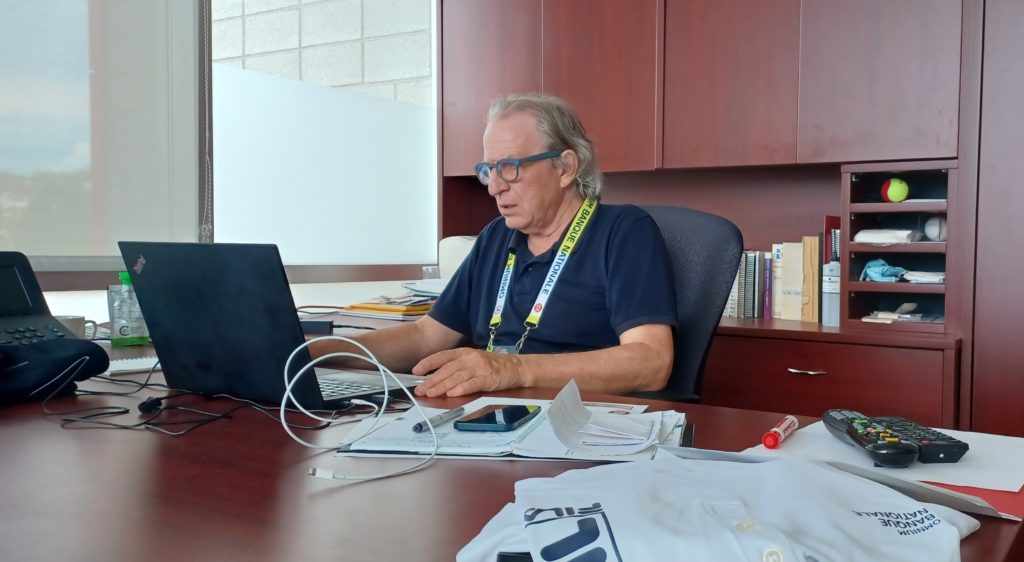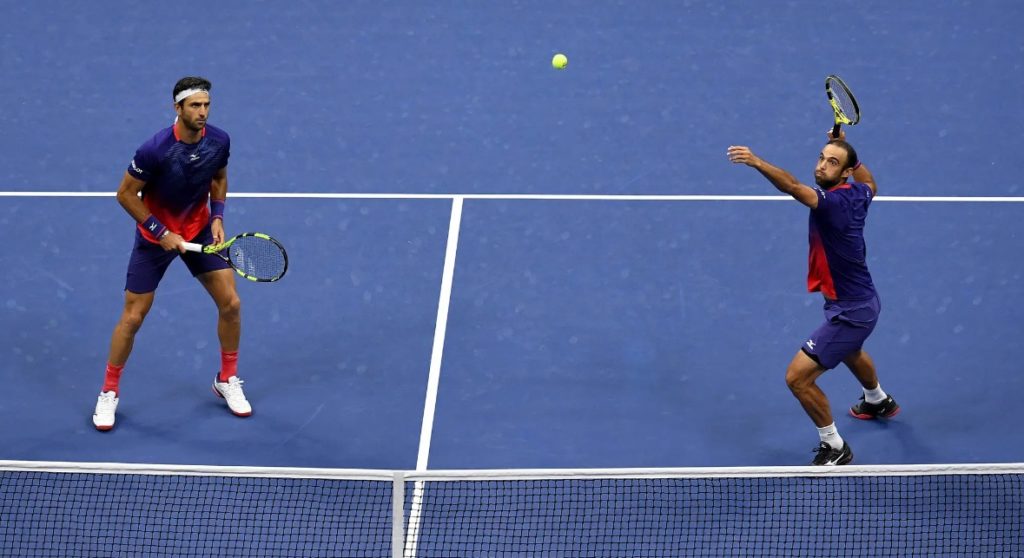
- Take 64 elite players, including 16 of the Top 20.
- Sprinkle 17 of them into another draw: the doubles.
- Add the unspoken tennis law that a player must NEVER compete in a doubles match before singles on the same day.
- Pour several millimetres of rain in the mix early on.
It’s a difficult recipe. Or, if you prefer, an especially challenging puzzle.
That’s what organizers of the National Bank Open have to deal with. Year after year after year.
Even when you know the recipe by heart, it’s not easy to make this delectable tennis cake rise. Just as the head cook—the tournament’s world-renowned master chef who’s prepared his fair share of tennis banquets.
Eugène Lapierre.

Most of the time, the chef and his team have to turn on a dime to make everyone happy—a difficult task if there ever was one.
FÉLIX: EARLY OR LATE SHOW?
First, there’s the ATP Tour, the ultimate authority. Then, there are the tennis stars, whom the tournament is lucky to host, even if it is one of the nine Masters 1000 events. And finally, there’s the public.
In Montréal, for example, all eyes were on Félix Auger-Aliassime when the week got underway. And with good reason, since he became the first Quebecer to reach the men’s quarterfinals of the Canadian Open.

Even though the tournament attracts tens of thousands of ticket holders, hundreds of thousands of fans follow Félix on TV. Millions, in fact.
And TV means prime time, which means evening. Except for his very first match on Wednesday, August 10, Auger-Aliassime played in the afternoon. And that disappointed a lot of people.
Eugène Lapierre and his team took the criticism, but the tournament director was eager to explain the decision: he follows the ATP’s recommendations. The Canadian Open may be his tournament, but he doesn’t have the final say.
SET RULE
“There’s a convention in tennis: singles players who also compete in doubles must play their singles match BEFORE the doubles when both are scheduled on the same day,” Lapierre said. The issue can get somewhat technical, but he did his best to make it easy to understand.
“Félix isn’t playing doubles here, but a lot of the players in the top half of the draw, where he happens to be, are. And they have to play those doubles matches after their singles. On the same day. So, it was automatic: on Thursday, we had to schedule mostly players in the top half during the day and players in bottom in the evening.”
And when these scheduling considerations arise, they really set the pace for the rest of the week. Some play in the afternoon, others play at night. And that’s until the final, in which the winning semifinalist who played during the three previous evenings will necessarily have to compete in an afternoon final.
“Still, because the final starts at 4 p.m., the finalist who won the previous evening has sufficient time to rest,” explained the tournament director.
The Tennis Canada VP has often raised the flag to the tours because he’s under pressure from fans and the television networks for which the evening is prime time. And don’t forget the many partners that want to see their brand in front of as many eyeballs as possible.
“I’d love to see a change,” Eugène Lapierre said. “I’ve been talking to the ATP about it for years, but I feel like I’m a voice in the wilderness. My perception is that it’s the ATP players’ association that’s reluctant and would view the change as a slap in the face for doubles players.”

“If that unwritten law changed, many singles players would give up doubles. Playing a doubles match before a singles match could hurt their chances in singles, which remains their main career goal. They point to the risk of injury before a critical singles match, etcetera.”
Knowing that, and despite all his attempts to change things, Eugène Lapierre seems resigned.
“It’s not in tennis’ tradition, and it never has been. I don’t think that’ll change any time soon,” he concluded wisely, hoping that fans will understand the heartbreaking choices tournament organizers face.



